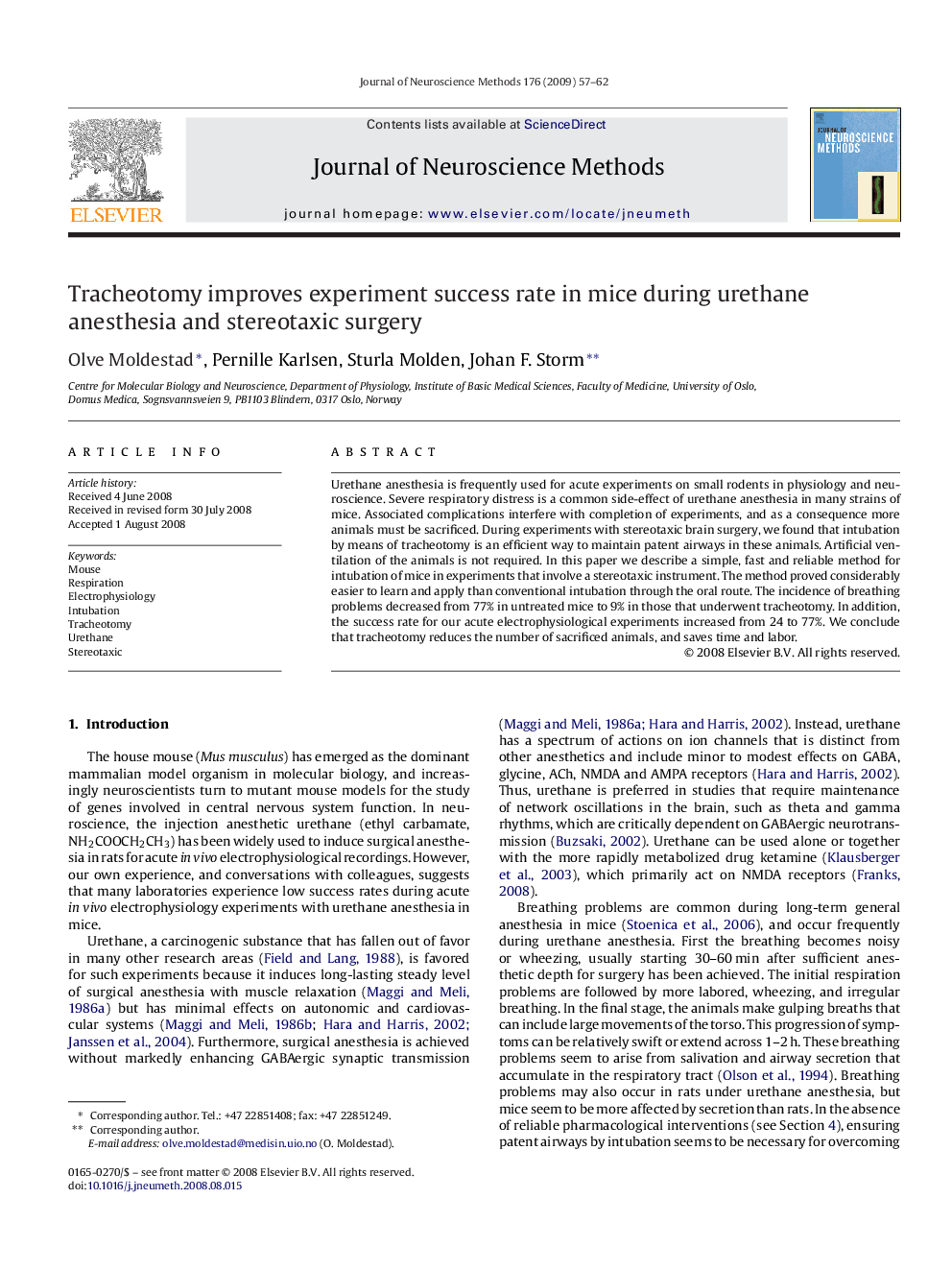| Article ID | Journal | Published Year | Pages | File Type |
|---|---|---|---|---|
| 4336051 | Journal of Neuroscience Methods | 2009 | 6 Pages |
Urethane anesthesia is frequently used for acute experiments on small rodents in physiology and neuroscience. Severe respiratory distress is a common side-effect of urethane anesthesia in many strains of mice. Associated complications interfere with completion of experiments, and as a consequence more animals must be sacrificed. During experiments with stereotaxic brain surgery, we found that intubation by means of tracheotomy is an efficient way to maintain patent airways in these animals. Artificial ventilation of the animals is not required. In this paper we describe a simple, fast and reliable method for intubation of mice in experiments that involve a stereotaxic instrument. The method proved considerably easier to learn and apply than conventional intubation through the oral route. The incidence of breathing problems decreased from 77% in untreated mice to 9% in those that underwent tracheotomy. In addition, the success rate for our acute electrophysiological experiments increased from 24 to 77%. We conclude that tracheotomy reduces the number of sacrificed animals, and saves time and labor.
